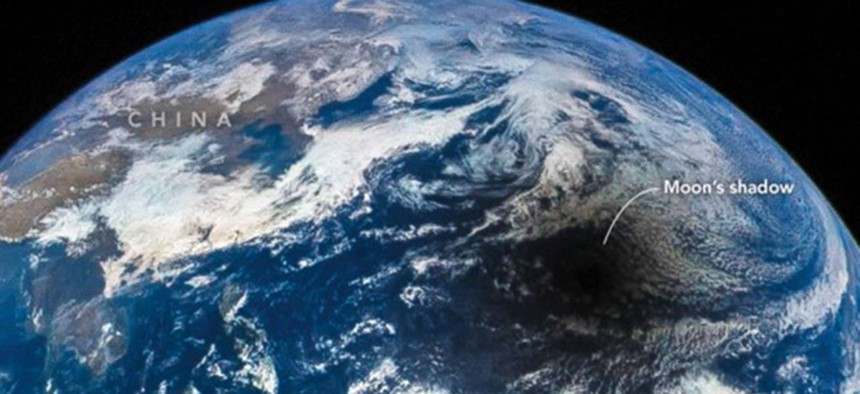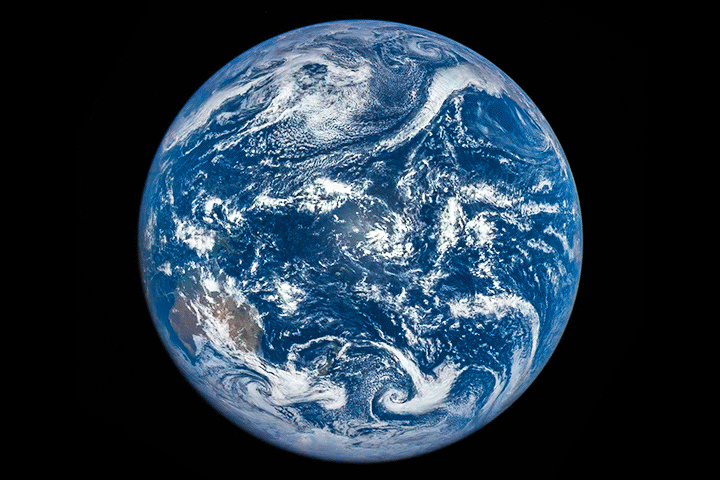
NASA
A Stupendous Government Satellite Animation of the Solar Eclipse
“I am not aware of anybody ever capturing the full eclipse in one set of images or video,” says a NASA scientist.
When the moon blotted out the sun this week, a plane full of “umbraphiles” was high in the air to bear witness. Here’s one of the views they captured fromAlaska Airlines Flight 870:
Missed #Eclipse2016? We timed our flight #870 to see it from 35,000 feet: https://t.co/EcI37ckUFd #Totality pic.twitter.com/IlHObPKmMv
— Alaska Airlines (@AlaskaAir) March 10, 2016
Even higher, though, was America’s year-old Deep Space Climate Observatory, recording what looked like an immense cigarette burn sliding across Earth. NASA, one of the agencies that runs it, has released an animation of 13 snaps from its EPIC camera and other imaging devices, and it’s about as wonderful as as you’d expect. The agency explains what makes the footage special:
“What is unique for us is that being near the Sun-Earth line, we follow the complete passage of the lunar shadow from one edge of the Earth to the other,” said Adam Szabo, NASA’s project scientist for DSCOVR. “A geosynchronous satellite would have to be lucky to have the middle of an eclipse at noon local time for it. I am not aware of anybody ever capturing the full eclipse in one set of images or video.”
In this, the only total solar eclipse of 2016, the shadow of the new Moon starts crossing the Indian Ocean and marches past Indonesia and Australia into the open waters and islands of Oceania (Melanesia, Micronesia, and Polynesia) and the Pacific Ocean. Note how the shadow moves in the same direction as Earth rotates. The bright spot in the center of each disk is sunglint—the reflection of sunlight directly back at the EPIC camera.
Though the animation takes just a few seconds to cycle, it represents the eclipse’s full lifespan of 4 hours and 20 minutes. Here it is:







